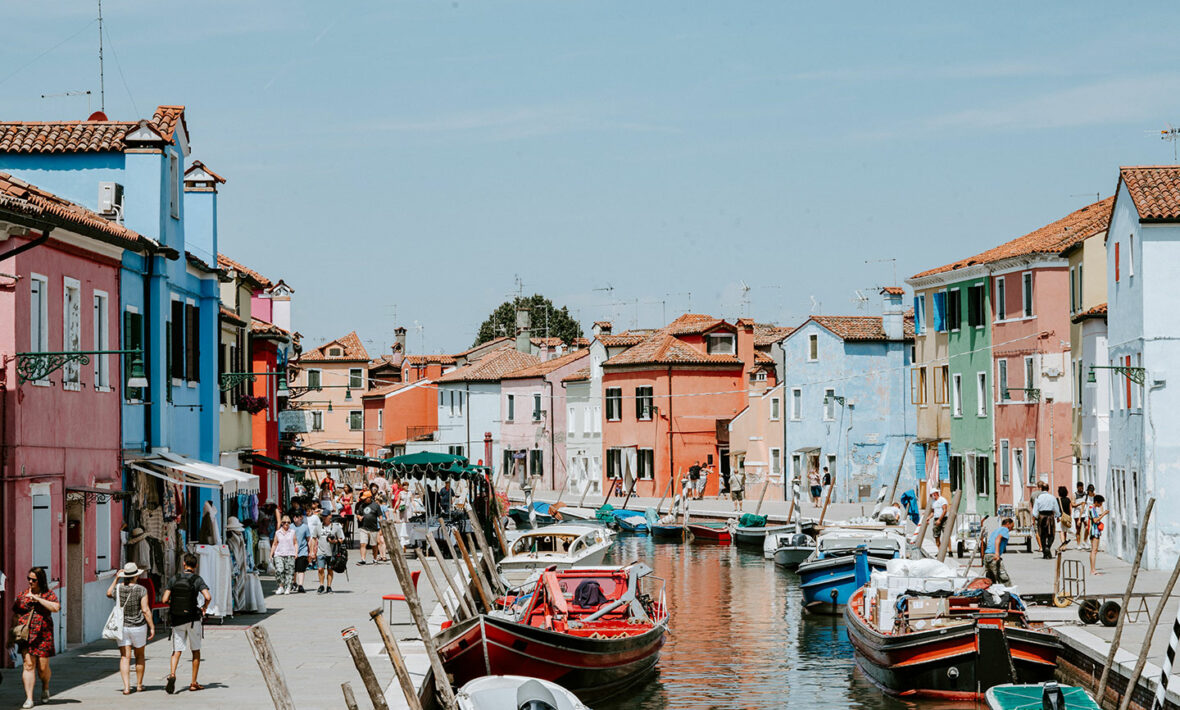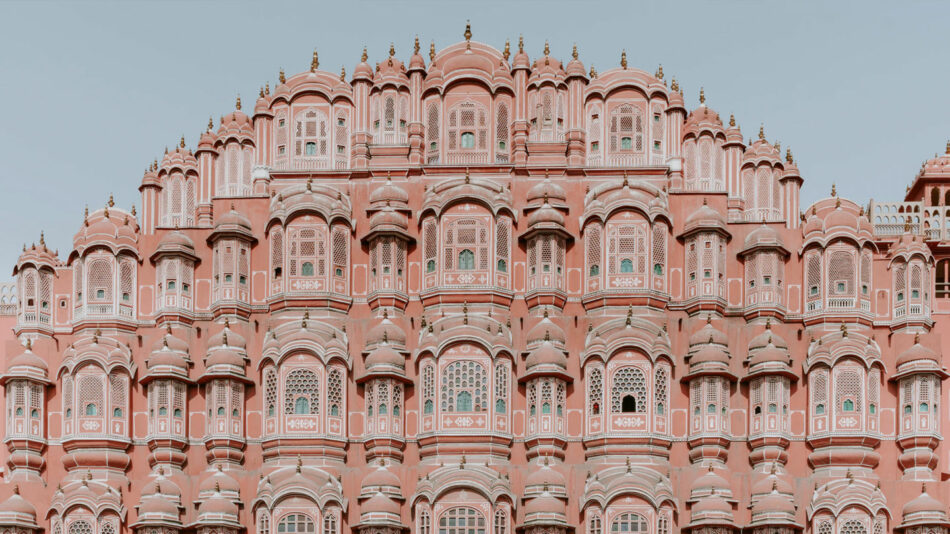
Haven’t you heard? Colour is the new black and these cities are showing off their colours in full form.
Guanajuato, Mexico
As a UNESCO World Heritage Site (meaning it is illegal for occupants to paint their houses any other colour), Guanajuato can be described as one of Mexico’s most captivating cities. Crammed together on steep slopes the coloured houses are a mismatch of colour, with clear reflections of colonial architecture. We recommend exploring on foot and if you get lost, just head down hill and you’re likely to find yourself back in the centre of town.
https://www.instagram.com/p/omJQoEQS_y/?utm_source=ig_web_copy_link
Jaipur, India
Known as India’s Pink City, it is one of the very few cities in the world that is predominately pink. According to the locals the city was painted pink (a colour of welcome and hospitality) in preparation for Prince Albert and Queen Victoria’s visit in 1876. The terracotta tones are now enforced under local law as it is considered to be adding to the heritage of the city itself. To avoid heat stroke we recommend heading to Jaipur in winter (early November until February).

Procida, Italy
This off-the-radar island is the smallest island in the Bay of Naples and is mostly untouched by tourism, allowing you to soak in the colourful sherbet buildings in peace. Rumour has it the fishermen painted their houses in colour, so they could be recognised from sea. Due to the small size of this city it can be hit in a day, so we recommend grabbing a ferry from Naples and heading over for the day.
Chefchaouen, Morocco
The ‘blue city’ is nestled amid the Rif Mountains of Morocco and it lives up to its nickname with the buildings all painted in shades of blue. There are many theories as to why this city is drowning in blue, one theory is that the Jewish locals chose the colour to symbolise the sky, some say the blue keeps away mosquitos and others believe it is just a reflection of the sea. To capture all the shades of this city, head out with your camera in tow at dusk or dawn for the full blue experience.
Bo-Kaap, Cape Town
This neighbourhood is one of the oldest residential areas in Cape Town and one of the most photographed due to the mix of colourful houses and cobblestoned streets. With a complex history entrenched in slavery, story has it that when these houses were homes to slaves they had to be kept white, so in an expression of their freedom the owners turned to bright colours at the first chance they had. This one is for history lovers with the oldest building dating back to 1798 housing the Bo-Kaap museum, and it is also home to Auwal Mosque, the oldest mosque in the country. When visiting it’s best to go during the day and dress conservatively in line with Muslin custom.
Nyhavn, Copenhagen
As one of the most famous areas in Copenhagen, Nyhavn is known for its yellow, orange and blue houses. As an old commercial port, these houses have been renovated and are now dominated by restaurants, the perfect place to end your day (especially in summer) with a drink and some people watching. Love a fairytale fun fact? Hans Christian Andersen used to live in no. 20, where he wrote his first and several subsequent fairytales (he also lived in no. 67 and no. 18).
Santa Marta Favela, Rio de Janeiro
As arguably the most famous favela in Rio, its colourful murals fill 75,000 square feet of the public main square. This is just a small part of Santa Marta and as the first pacified favela in Rio, it has become a much safer place to visit in recent times. We recommend finding a local tour guide (or you know, joining a Contiki) who will be able to navigate you through the area and all it has to offer.
https://www.instagram.com/p/BXjQ6o4j9jB/?utm_source=ig_web_copy_link
Burano Island, Italy
An island in the Venice Lagoon, Italy claims another spot on this list and for good reason. While Burano is famed for its lacemaking, it’s the colourful houses that draw in visitors. Similar to Procida, legend has it local fishermen liked to see bright colours on their way home. However, unlike Procida, these colours are also used to show where one property ends and another begins. The residents of this island repaint their houses every 2 years to minimise fading, and it is prohibited to paint your house in the same colour as your neighbour. Talk about a commitment to colour.
Charleston, South Carolina
Rainbow Row is an iconic Charleston site dating back to 1740, but only got its colour in the early 1900s. It consists of 13 pastel coloured houses sitting near the water. Locals debate over the reasoning behind the colours with some believing it allowed drunk sailors to find their way home. Others say the pastel colours were put in place to fight off the heat and lower the temperatures within the house’s, while others still think the origin comes from the house’s being old shops and that the colours were used to attract sales and distinguish what type of wares were being sold. We recommend heading to this street for sunset, as the light emphasises the pastel hues.
Menton, France
Menton is filled with gold, salmon and cherry coloured buildings topped with terracotta roofs on a backdrop of mountains, giving it a picturesque view wherever you turn. As an off the beaten track destination, the colourful city can be taken in without the crowds. Its buildings aren’t the only thing bringing this city colour, with the hills full of orange and lemon crops, and a whole festival dedicated to the citrus fruits taking place in February.
https://www.instagram.com/p/BogGkIlg_mF/?utm_source=ig_web_copy_link
Haven’t you heard? Colour is the new black and these cities are showing off their colours in full form.
Guanajuato, Mexico
As a UNESCO World Heritage Site (meaning it is illegal for occupants to paint their houses any other colour), Guanajuato can be described as one of Mexico’s most captivating cities. Crammed together on steep slopes the coloured houses are a mismatch of colour, with clear reflections of colonial architecture. We recommend exploring on foot and if you get lost, just head down hill and you’re likely to find yourself back in the centre of town.
https://www.instagram.com/p/omJQoEQS_y/?utm_source=ig_web_copy_link
Jaipur, India
Known as India’s Pink City, it is one of the very few cities in the world that is predominately pink. According to the locals, the city was painted pink (a colour of welcome and hospitality) in preparation for Prince Albert and Queen Victoria’s visit in 1876. The terracotta tones are now enforced under local law as it is considered to be adding to the heritage of the city itself. To avoid heat stroke we recommend heading to Jaipur in winter (early November until February).

Image source:Annie Spratt
Procida, Italy
This off-the-radar island is the smallest island in the Bay of Naples and is mostly untouched by tourism, allowing you to soak in the colourful sherbet buildings in peace. Rumour has it the fishermen painted their houses in colour, so they could be recognised from sea. Due to the small size of this city it can be hit in a day, so we recommend grabbing a ferry from Naples and heading over for the day.

Image source: Erwin Doorn
Chefchaouen, Morocco
The ‘blue city’ is nestled amid the Rif Mountains of Morocco and it lives up to its nickname with the buildings all painted in shades of blue. There are many theories as to why this city is drowning in blue, one theory is that the Jewish locals chose the colour to symbolise the sky, some say the blue keeps away mosquitos and others believe it is just a reflection of the sea. To capture all the shades of this city, head out with your camera in tow at dusk or dawn for the full blue experience.

Image source:Federico Gutierrez
Bo-Kaap, Cape Town
This neighbourhood is one of the oldest residential areas in Cape Town and one of the most photographed due to the mix of colourful houses and cobblestoned streets. With a complex history entrenched in slavery, story has it that when these houses were homes to slaves they had to be kept white, so in an expression of their freedom the owners turned to bright colours at the first chance they had. This one is for history lovers with the oldest building dating back to 1798 housing the Bo-Kaap museum, and it is also home to Auwal Mosque, the oldest mosque in the country. When visiting it’s best to go during the day and dress conservatively in line with Muslin custom.
https://www.instagram.com/p/BSFUXjFgAnm/?utm_source=ig_web_copy_link
Nyhavn, Copenhagen
As one of the most famous areas in Copenhagen, Nyhavn is known for its yellow, orange and blue houses. As an old commercial port, these houses have been renovated and are now dominated by restaurants, the perfect place to end your day (especially in summer) with a drink and some people watching. Love a fairytale fun fact? Hans Christian Andersen used to live in no. 20, where he wrote his first and several subsequent fairytales (he also lived in no. 67 and no. 18).

Image source:Max Adulyanukosol
Santa Marta Favela, Rio de Janeiro
As arguably the most famous favela in Rio, its colourful murals fill 75,000 square feet of the public main square. This is just a small part of Santa Marta and as the first pacified favela in Rio, it has become a much safer place to visit in recent times. We recommend finding a local tour guide (or you know, joining a Contiki) who will be able to navigate you through the area and all it has to offer.
https://www.instagram.com/p/BXjQ6o4j9jB/?utm_source=ig_web_copy_link
Burano Island, Italy
An island in the Venice Lagoon, Italy claims another spot on this list and for good reason. While Burano is famed for its lacemaking, it’s the colourful houses that draw in visitors. Similar to Procida, legend has it local fishermen liked to see bright colours on their way home. However, unlike Procida, these colours are also used to show where one property ends and another begins. The residents of this island repaint their houses every 2 years to minimise fading, and it is prohibited to paint your house in the same colour as your neighbour. Talk about a commitment to colour.
https://www.instagram.com/p/BsyEnzuA9oo/?utm_source=ig_web_copy_link
Charleston, South Carolina
Rainbow Row is an iconic Charleston site dating back to 1740, but only got its colour in the early 1900s. It consists of 13 pastel coloured houses sitting near the water. Locals debate over the reasoning behind the colours with some believing it allowed drunk sailors to find their way home. Others say the pastel colours were put in place to fight off the heat and lower the temperatures within the house’s, while others still think the origin comes from the house’s being old shops and that the colours were used to attract sales and distinguish what type of wares were being sold. We recommend heading to this street for sunset, as the light emphasises the pastel hues.
https://www.instagram.com/p/BsrOCE2nTLH/?utm_source=ig_web_copy_link
Menton, France
Menton is filled with gold, salmon and cherry coloured buildings topped with terracotta roofs on a backdrop of mountains, giving it a picturesque view wherever you turn. As an off the beaten track destination, the colourful city can be taken in without the crowds. Its buildings aren’t the only thing bringing this city colour, with the hills full of orange and lemon crops, and a whole festival dedicated to the citrus fruits taking place in February.
https://www.instagram.com/p/BogGkIlg_mF/?utm_source=ig_web_copy_link

